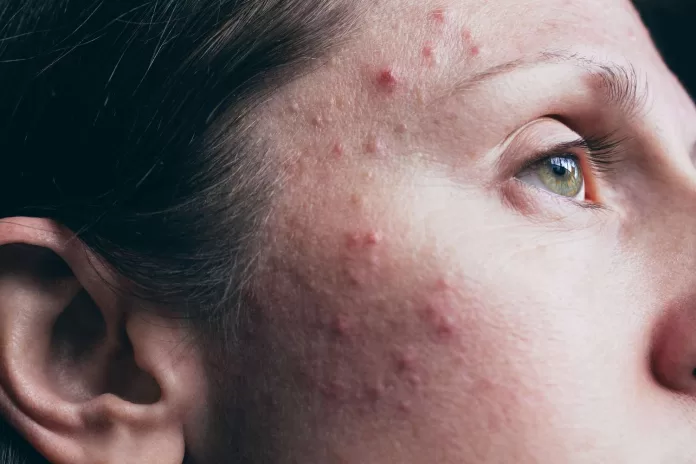Acne vulgaris, commonly referred to simply as acne, is a skin condition that affects millions of individuals globally, making it one of the most prevalent dermatological issues known today. While it is most commonly associated with adolescence, it can impact individuals of all ages. Understanding the mechanisms behind acne, its different types, symptoms, and available treatments can empower those affected to manage their condition effectively.
What Is Acne Vulgaris?
Acne vulgaris arises when hair follicles become obstructed with oil and dead skin cells. This obstruction results in the formation of various types of blemishes, including pimples, blackheads, and whiteheads. The condition is primarily influenced by hormonal changes, especially during puberty, though it can also be exacerbated by dietary choices, stress, and certain medications.
The skin naturally produces sebum, an oily substance that lubricates and protects the skin. However, an overproduction of sebum, often triggered by hormonal shifts, can lead to the clogging of hair follicles. Once blocked, these follicles can become inflamed, resulting in the various manifestations of acne.
Types of Acne
Acne vulgaris can present itself in several forms, each with distinct characteristics. Understanding these types is crucial for appropriate treatment.
- Blackheads: Open comedones, or blackheads, form when a clogged pore remains open to the air, causing the oil and debris within to oxidize and turn dark.
- Whiteheads: Closed comedones are whiteheads, which occur when pores are blocked and sealed, preventing the contents from being exposed to air.
- Papules: These are small, raised, red bumps that can be tender to touch, resulting from inflammation around clogged follicles.
- Pustules: Typically larger and filled with pus, pustules appear as red bumps with a white tip, indicating infection and inflammation.
- Nodules: These are deeper, often painful lumps that form beneath the skin’s surface.
- Cysts: These are larger, pus-filled lumps that can be very painful and are often a result of severe acne.
Symptoms of Acne Vulgaris
The symptoms associated with acne vulgaris can vary depending on the severity of the condition. Common indicators include:
- Persistent Breakouts: The presence of pimples, particularly on the face, back, chest, and shoulders.
- Scarring: Acne may leave behind scars and dark spots that can take months or even years to heal.
- Skin Changes: Redness, swelling, and tenderness around the affected areas, which may signal inflammation.
Recognising these symptoms early is key to implementing effective treatment strategies and preventing long-term skin damage.
Why Early Intervention Is Important
Addressing acne vulgaris promptly is crucial for several reasons:
- Preventing Scarring and Dark Spots: Early treatment can significantly reduce the risk of severe scarring and the formation of hyperpigmentation, which can persist long after the acne has resolved.
- Enhancing Self-Esteem and Confidence: Many individuals with acne experience significant emotional distress and diminished self-esteem. Effective management of the condition can lead to improved self-image and mental health.
- Promoting Healthier Skin: By treating acne early, individuals can foster an overall healthier complexion, reduce the frequency of breakouts, and maintain better skin texture.
Exploring Treatment Options
Treating acne vulgaris effectively often requires a multi-faceted approach that may include lifestyle changes, topical treatments, and, in severe cases, systemic medications.
Lifestyle Modifications
- Dietary Changes: A diet rich in fruits, vegetables, whole grains, and lean proteins can help reduce inflammation. Some studies suggest that high-glycemic foods and dairy may exacerbate acne in certain individuals.
- Skincare Routine: Maintaining a consistent skincare routine that includes gentle cleansing, exfoliation, and non-comedogenic moisturizers can promote clearer skin. Avoid harsh scrubs, which may irritate the skin and worsen acne.
Topical Treatments
Various over-the-counter and prescription topical treatments can effectively combat acne:
- Benzoyl Peroxide: Works by killing acne-causing bacteria and helping to unclog pores.
- Salicylic Acid: A beta hydroxy acid (BHA) that helps to exfoliate the skin and clear clogged pores.
- Retinoids: These vitamin A derivatives promote skin cell turnover and can effectively reduce the severity of acne.
Systemic Treatments
For individuals with moderate to severe acne, oral medications may be necessary:
- Antibiotics: These can help reduce inflammation and bacterial presence in the skin.
- Hormonal Treatments: Hormonal therapies, such as birth control pills, can balance hormones that contribute to acne.
- Isotretinoin: A powerful oral retinoid often reserved for severe or resistant cases of acne. It is effective but requires careful monitoring due to potential side effects.
Conclusion
Acne vulgaris is a complex skin condition that can significantly impact one’s quality of life. However, with a better understanding of its causes, types, symptoms, and effective treatment strategies, individuals can manage their acne more effectively. Whether through lifestyle adjustments or medical intervention, timely assistance can lead to clearer skin and improved self-confidence.


